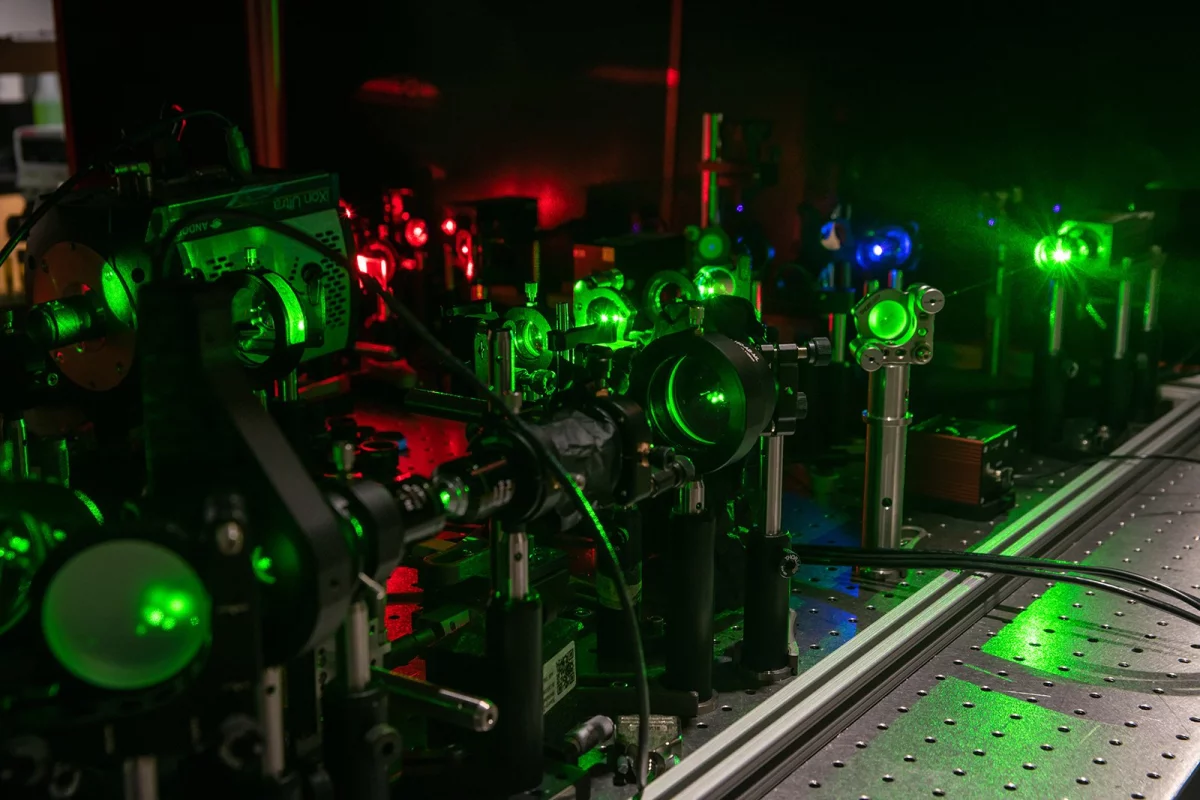Scientists at Caltech have created a quantum microscope that taps into the quirky quantum rules to see tiny details much more clearly. Using pairs of entangled photons allows the instrument to double the resolution of images without damaging the sample.
A key limitation of microscopes is that they can only image objects or details that are half the wavelength of the light used – so for optical microscopes, details can be seen down to about 200 nanometers. Using photons with shorter wavelengths, such as ultraviolet, can allow microscopes to look closer.
But, of course, there’s a catch. The shorter the wavelength the higher the energy, so by the time you get down to these scales the photons used to image the samples are damaging or even destroying them.
But the Caltech team’s quantum microscope gets around this problem thanks to the spooky properties of quantum physics. Entanglement is a strange phenomenon where two or more particles can become so entwined with each other that it becomes impossible to describe one without the other. In this case, the scientists entangle two photons into one unit called a biphoton, which behaves like a single photon with lower energy and half the wavelength.
“Cells don't like UV light,” said Lihong Wang, lead researcher on the study. “But if we can use 400-nanometer light to image the cell and achieve the effect of 200-nm light, which is UV, the cells will be happy, and we're getting the resolution of UV.”

To do so requires a careful optical setup. First, laser light is shone through a special crystal that converts some photons into biphotons. These entangled pairs are then split up and sent down two parallel paths – one photon passes through the sample being imaged, while the other avoids it. Afterwards, the photons make their way to a detector, where the data can be analyzed and an image built.
The team’s experiments showed that the technique works to image cells without destroying them, and can pass a microscopic “eye test” where lines of varying widths, on the scale of micrometers, are displayed to check how well an instrument can distinguish between them. And sure enough, the quantum microscope technique demonstrated a resolution twice that of a “classical” test run using regular photons. That’s much better than other quantum microscope experiments that have only managed to boost resolution by about 35%.

One drawback, the team says, is that the biphotons are only created very rarely – the crystal spits out about one biphoton in a million photons. Thankfully, lasers like this produce a staggering number of photons per pulse.
And, of course, there’s still room for improvement. The researchers say that future work could entangle even more photons together, with each one decreasing the wavelength and boosting the resolution. The problem there, however, is that this also reduces the already-low probability of an entanglement each time.
The research was published in the journal Nature Communications.
Source: Caltech




